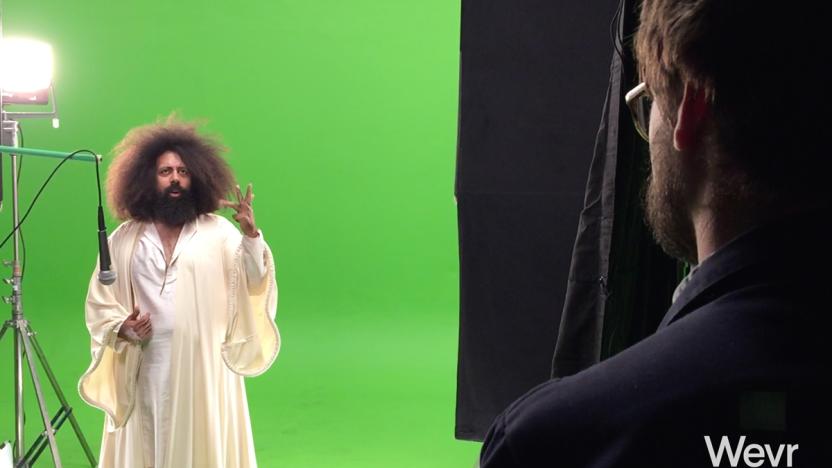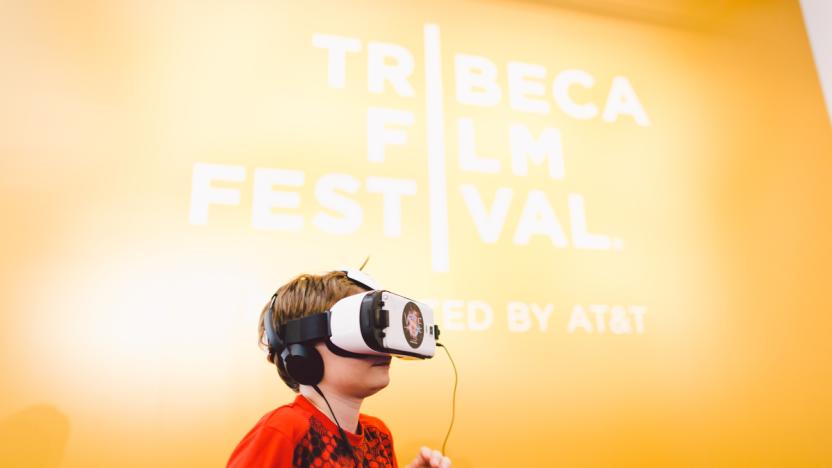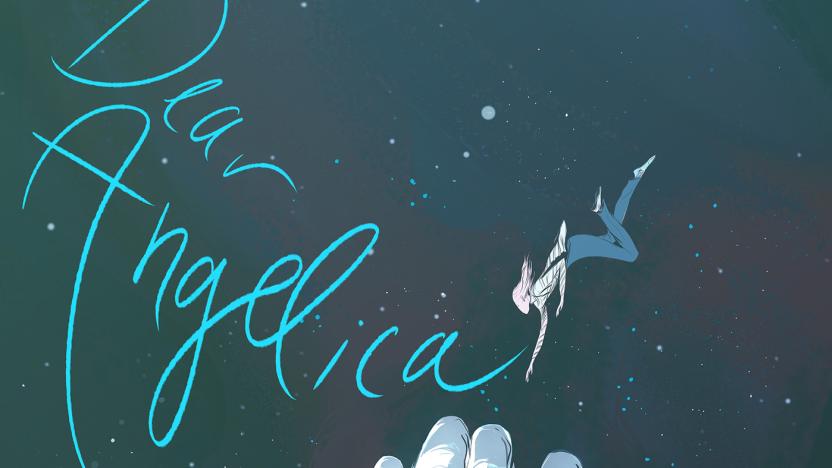uk-feature
Latest

The 21st-century charity that puts Google and VR to good use
How do you get people to care about the world's problems? More important, how do you get them to care enough to take action? Some nonprofits, like the ASPCA, are fortunate enough to have the perfect mix of cute animals in distress and a sappy Sarah McLachlan song to get the tears running and the donations flowing. But what if your charity lacks the glamour of a pop icon and the heartstrings pull of a wounded puppy? What if your charity's cause is as mundane as bringing clean water to those who don't have it? In a world where we have the luxury of opting for a $3 bottle of Fiji Water over Pellegrino, how do you drive home the point that some people have no other choice but to drink water infested with leeches? For an organization like Charity: Water, the answer to that question was a technological one: Take people to the Third World in a virtual reality documentary and show them how their dollars are being spent with real-time data from a Google-funded water sensor.

Everything you need to know about the redrafted IP Bill
The Investigatory Powers Bill, which is set to become the UK's new, consolidated piece of surveillance legislation, was first introduced in draft form late last year. After fielding the thoughts and concerns of telecoms providers, major tech firms, intelligence specialists, privacy advocates and many more invested parties, a trio of Parliamentary committees reviewed and ultimately criticised the draft bill. Taking the red pen of the committees on board, the Home Office has revised the draft and yesterday submitted the IP Bill Mark II to Parliament. Mostly, it just tries to clarify a few of the more ambiguous proposals, but it also expands certain powers rather than reining any in.

Wevr: The virtual reality studio you need to know
It's pronounced "weaver." And you might not be familiar with it now, but the LA-based virtual reality outfit is quietly positioning itself as the backbone of the industry. With one foot firmly planted in the production side of the business (the studio's recent slate includes Sports Illustrated's swimsuit issue) and the other in distribution, Wevr is primed for the impending mainstreamification of virtual reality. So when the public eventually goes gaga over VR goggles, Wevr will be right there, ready to deliver that content.

Inside Lady Gaga's high-tech Grammy performance
When Lady Gaga started singing "Space Oddity" at the Grammys on Monday night, virtual drops of red paint dripped down her face to form a lightning bolt. The image -- a meticulously planned facial projection -- instantly evoked David Bowie's face on the cover of Aladdin Sane. For the six-minute tribute to the legend who passed away a little over a month ago, Gaga employed an assortment of cutting-edge tools to create a kaleidoscopic visual treat.

Film's cinema comeback is driven by nostalgia, not logic
When Kodak declared bankruptcy and Fujifilm halted film stock production, things looked grim for celluloid. Shooting was going digital, and new cameras from Red, Sony and Arri produced quality nearly on par with 35mm cinema cameras. Film, however, has made a cinematic comeback. Last year saw a string of shot-on-film movies you may have heard of: Star Wars: The Force Awakens, The Hateful Eight and Interstellar. The directors of those movies believe that film is superior for capturing images -- and Quentin Tarantino even thinks it's a better release format, judging by his Hateful Eight 70mm roadshow. On the other hand, we seem to have forgotten about the crappy theater release prints, environmental waste, extra cost and elitism of film, to name just a few issues. The latest digital cameras now equal or exceed photochemical celluloid in just about every way. Yet, we still hold onto film's unique look and even its faults. Are we just too used to it to move on?

Sports Illustrated puts you inside the new Swimsuit Issue
Babes, bikinis and ... virtual reality? It's an equation that pretty much elicits a "no duh!" from anyone in the room. Which is why when I meet Chris Hercik at Time Inc. headquarters in New York, he can barely suppress his glee, and for good reason. As creative director of Sports Illustrated, Hercik's overseen every cover of the magazine, including its annual Swimsuit issue, since 2002. But this year, in addition to its big 2016 Swimsuit cover model reveal (Ronda Rousey graces one of three covers), the iconic brand is doing things differently: It's launching a suite of mobile VR experiences designed to put you on the beach for some one-on-one time with the models. "For the first time ever, we're going to be able to answer the question that I always get and a lot of the people on staff always get, which is: 'What is it like to be on set for a Sports Illustrated photo shoot?'" says Hercik.

Tribeca Film Festival wants to normalize VR for the masses
Genna Terranova wants virtual reality to feel "commonplace." That is, she wants to make it normal. Terranova, who serves as the director of the Tribeca Film Festival, thinks now is the time to break VR out of its headline-stealing sideshow and make it accessible to the general public. And with a mix of 23 VR exhibits and installations planned for the fest's upcoming slate this April in New York, she's on track to do just that. "Yes, the Gear [VR] is out there and Oculus [Rift] is coming, but it's still a bit rarefied as far as the general public goes," says Terranova. "So we want to create a place where people can really explore this and not feel intimidated by it. But also create a space where you can experience these individual pieces and then have conversations about them."

'Star Wars' VFX Oscar nominees on making 'The Force Awakens'
If there's one thing you can be certain to find in a Star Wars movie, it's glorious special effects. So after The Force Awakens opened last year, an Academy Award nomination for the film's VFX leads seemed inevitable. Roger Guyett and Patrick Tubach will be going up against visual effects teams behind other big-budget sci-fi films, including Mad Max: Fury Road and The Martian, as well as a rare indie nominee, Ex Machina. We sat down with Guyett and Tubach ahead of the Oscars on February 28th to explore how they went about bringing Star Wars back to life. (Warning: This interview is naturally full of spoilers.)

It takes a village: The rise of virtual pop star Hatsune Miku
The crowd waves neon green glow sticks in the air. The performer they came to see is loading on a screen. After a kaleidoscopic burst of magic dust, Hatsune Miku, one of Japan's preeminent pop stars, appears on stage. As she breaks into a song-and-dance routine, her long aqua-colored pigtails brush her ankles. The thunderous roar inside New York's Hammerstein Ballroom is for an artist who doesn't exist. She's a computer-generated virtual singer projected on a screen.

'Star Wars' and the coming holographic cinema revolution
"AR is going to hit us like a big bang," says ILMxLab creative director John Gaeta when I ask him whether augmented reality, as that holographic technology is known, has been undervalued by the public and press. "We're just trying to point out right from the beginning that there will be a form of AR that will be as hi-fidelity as the cinema that you see at some point. I can't say what year that'll be. But at some point, we'll have intimate holo-experiences with performance and things like that."

Nokia president talks Ozo and the company's big VR bet
"We had some projects in augmented reality. We had projects in the camera. We had projects in head-mounted displays," says Nokia Technologies president Ramzi Haidamus, speaking to Engadget at the Sundance Film Festival about the company's virtual reality pivot. "We had projects all over the ecosystem, so to speak. And it was a combination of: How good are we technically? How well are we protected from an IP perspective? And finally, where is the area where we're going to get the biggest advantage from the time to market?"

Funny or Die makes a fart joke in VR
The news itself sounded like a joke: Funny or Die, the irreverent comedy video site created by the likes of Will Ferrell, among others, was to premiere its first-ever virtual reality short at the Sundance Film Festival. Except this wasn't some Onion-style spoof headline; it was very much true. The piece, Interrogation, debuted last Friday on Gear VR at Samsung Studio, a pop-up VR lounge the company installed in Park City, Utah, for the duration of the festival. It stars Paul Scheer and Rob Huebel, faces better known for their work on FX's The League, as two cops trying to get to the bottom of a heinous crime. It is, in essence, an extended and immersive fart joke.

The future of entertainment's taking shape on a flying whale
When Alex McDowell tells me he's considering using virtual reality as "a new kind of literacy," as a way to educate using real science, it's clear that I'm dealing with a visionary. We're sitting beside The Leviathan Project, his "research project" that's taking temporary residence at the Sundance Film Festival's New Frontier exhibit, and dissecting the shifting parameters that define this brave new media world. McDowell's a film industry veteran who's worked on production design with the bold-faced names that've directed some of cinema's most unforgettable blockbusters. From the likes of David Fincher with Fight Club to Terry Gilliam with Fear and Loathing in Las Vegas and Steven Spielberg's Minority Report, McDowell's had a hand in guiding our imagination and steering our conception of the future for several decades.

How one illustrator forced Oculus Story Studio to redraw VR
During preproduction on its latest virtual reality short, Dear Angelica, Oculus Story Studio found itself in a peculiar situation: The chosen art style, illustration, had necessitated a design pivot. Rather than scan and rebuild the drawings of illustrator Wesley Allsbrook in CG -- a time-consuming process the studio felt would dilute her artistic voice -- the team needed a brand-new tool, one that would let Allsbrook draw directly within VR. And so engineer Inigo Quilez created just that. The end result is Quill, a new VR illustration tool that's evolving along with production on Dear Angelica and Allsbrook's needs and pushing the medium even further.

The VR arcade of the future will look something like this
I knew I was on solid ground. I knew that no matter if I misstepped, I wouldn't fall hundreds of feet, plummeting to my death in some CG-Egyptian ruin. And yet, I was shaky, desperately reaching out for a handhold to steady myself, unable to calmly place one foot in front of the other as I attempted to cross a chasm bridged by a collection of meager wooden beams.
![[Image credit: Christopher Furlong via Getty Images]](https://s.yimg.com/uu/api/res/1.2/_EzeROcpRSYDdwY3O78RaQ--~B/Zmk9ZmlsbDtoPTQ2ODtweW9mZj0wO3c9ODMyO2FwcGlkPXl0YWNoeW9u/https://o.aolcdn.com/dims-shared/dims3/GLOB/crop/5450x3380+0+0/resize/1400x868!/format/jpg/quality/85/https://o.aolcdn.com/hss/storage/midas/f2dd10e4ac56ff7ad2d18b6038de6fac/203266961/491520548.jpg.cf.jpg)
Home Secretary leaves plenty unanswered after IP Bill debate
At its heart, the Investigatory Powers Bill aims to give law enforcement and government agencies the means and powers to access Brits' online communications to aid their investigations. The bill's joint committee, whose job it is to scrutinise the legislation, has for several months been consulting with ISPs, mobile operators, tech companies, legal professionals, intelligence experts, privacy groups and other stakeholders. The last of these public evidence sessions took place on Wednesday, with Home Secretary Theresa May, the author of the IP Bill and long-time advocate of expanding the government's surveillance capabilities, being quizzed by the committee. While May attempted to provide some clarity on ambiguous parts of the bill and address concerns raised in previous sessions, plenty of uncertainty remains.

Fox pushes virtual reality to the limit with 30 minutes on Mars
I wasn't prepared for The Martian VR Experience. All I'd known before sitting down in a padded seat in a near-pitch-black booth, tucked away in the Library bar at Vegas' Marquee nightclub, was that I'd be enveloped in virtual reality for up to 30 minutes. And I was worried about that. Bad virtual reality -- VR that lasted up to two minutes -- has sidelined me in the past, leaving a lingering nausea I'd prefer to never revisit. But by going all in with its first commercial experience, 20th Century Fox has made an expensive bet that pays off: It's created comfortable long-form VR.

Three Vegas psychics predict the year in tech
The idea hit me as I deleted yet another email from yet another eager publicist desperately seeking an outlet for their analyst client's technology predictions. I'd get a psychic reading. But instead of asking about my personal life, I'd get the download on what technology's going to be hot and what's not in 2016 straight from a "higher source."

Flying the Icon A5, an almost affordable personal plane
As we cut through the skies over the Hudson River and traced a loop around the Statue of Liberty, I spent as much time glancing down at the instrument cluster as I did peering out the window. That might seem like a huge waste of time given the views I was taking in but I couldn't help it: It's not often I wind up in the cockpit of a plane looking at dials and readouts, much less ones that make sense to me. That's because a pilot and I were tooling around in an Icon A5, a $189,000 "light sport" amphibious aircraft that's eager to shrug off the complexity of (relatively) cheap aviation. After nearly ten years of development and fighting for FAA approval, the A5 is almost ready to make the skies accessible to the well-heeled.

The 15 weirdest gadgets of 2015
It's been a good year for gadgets, and also a bad year for gadgets. From smile-enforcing Santa beards and remote telepresence teddy bears to "wearable" tablets and cameras, here are 15 marvels of modern technology that are either the best or worst ideas (or maybe both) that we've covered this year.






